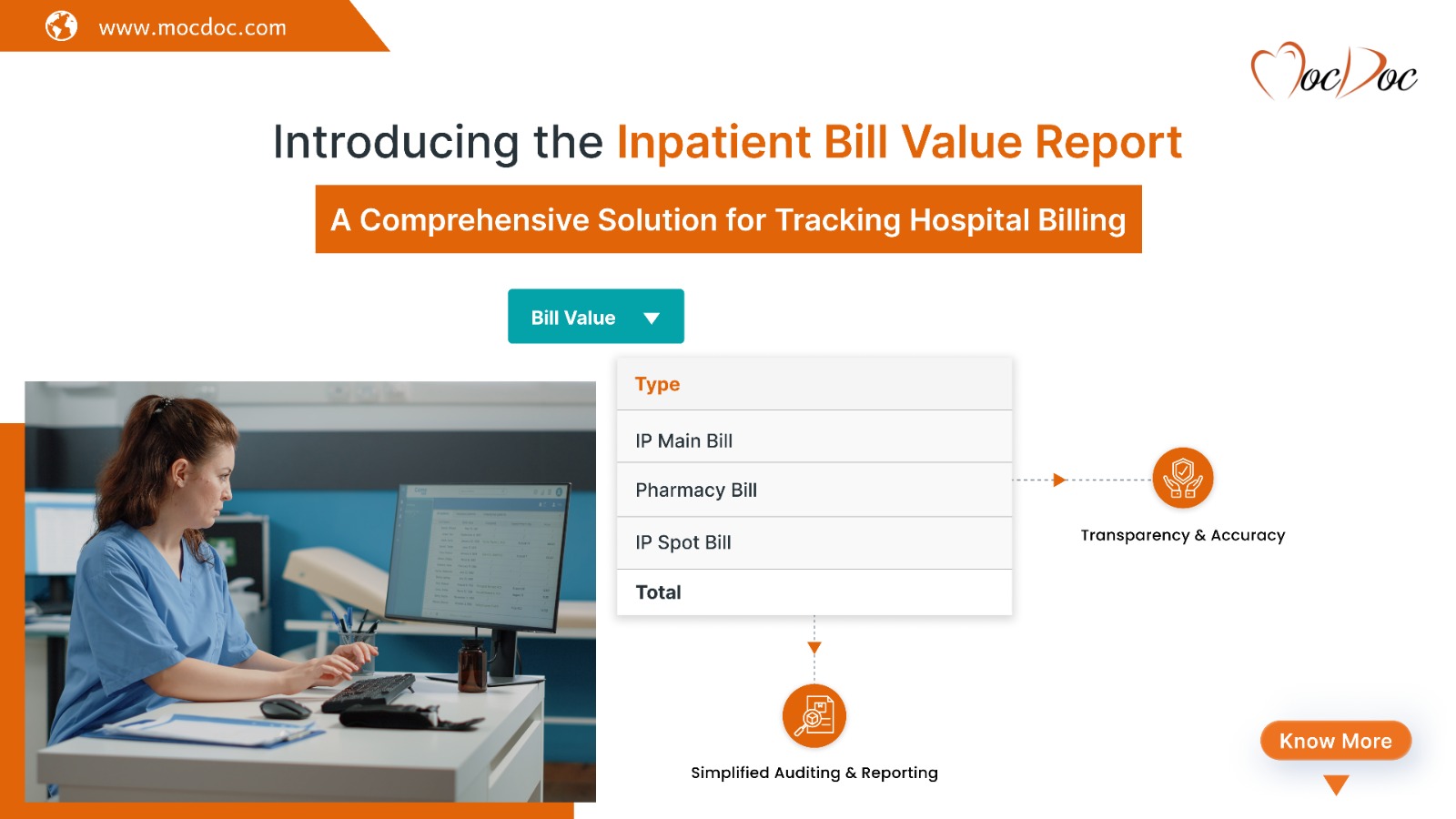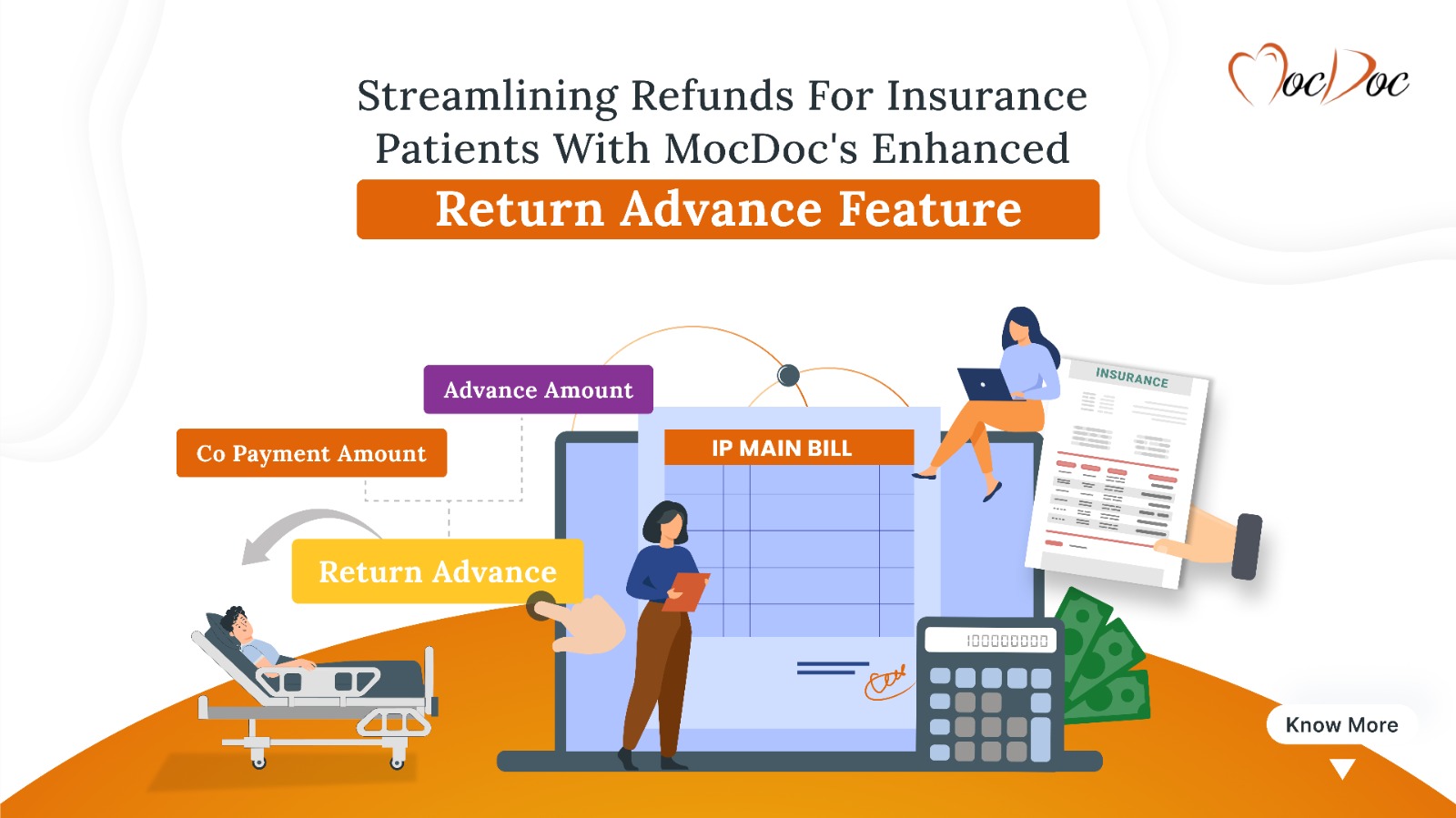2025022513:22:12
Introducing the Inpatient Bill Value Report: A Comprehensive Solution
Published by: Mohammed Siddiq

In the ever-evolving healthcare sector, accurate and transparent billing is a key component of effective hospital management. To enhance this process, we are proud to introduce a new feature in our Management Information System (MIS) – the Inpatient Bill Value Report. This report provides a detailed breakdown of a patient's total bill value during their inpatient admission, covering multiple categories of charges.
What Does the Inpatient Bill Value Report Include?
The Inpatient Bill Value Report consolidates billing data across three main categories:
- IP Main Bill – Covers the majority of services provided during the inpatient stay, such as room charges, doctor visits, and diagnostic tests. This serves as the central billing category for inpatient services.
- Pharmacy Bill – Captures charges related to medications and other pharmacy services, ensuring proper accounting of all pharmaceutical expenses.
- IP Spot Bill – Separates specific services that are not intended to be included in the IP main bill. These charges are collected instantly from the patient, offering greater flexibility in the hospital's billing process.
Key Features and Benefits
The Inpatient Bill Value Report provides a comprehensive view of total billing, offering valuable insights into the financial aspects of inpatient care. It helps hospitals efficiently manage and track financials while ensuring transparency for patients and administrators.
Why Is This Report Important?
- Transparency and Accuracy – Ensures both hospital management and patients have a clear understanding of all charges incurred during an inpatient stay.
- Efficient Financial Tracking – Consolidates billing data in a single report, reducing errors and improving operational efficiency.
- Improved Patient Experience – Helps patients understand their charges and address any discrepancies with ease.
- Simplified Auditing and Reporting – Facilitates compliance and internal audits by providing a structured view of billing across different categories.
Conclusion
The Inpatient Bill Value Report is a powerful tool for enhancing billing transparency, improving hospital operations, and ensuring clarity in inpatient billing. By offering a detailed breakdown of charges, it streamlines the billing process, reduces discrepancies, and fosters trust between hospitals and patients.
This new addition to our MIS system reflects our commitment to improving healthcare management and supporting hospitals in delivering efficient, transparent, and patient-centric services.
Best Hospital Management ...
Best Hospital Management Software in CaliforniaWhy California.....
Published by: Mohammed Siddiq
2025120415:41:31
How to Invest in a Hospit...
One of the first things that come into our mind before we dec.....
Published by: Steve
2025101609:14:49
VMS Integrated Hospital M...
Ba, Fiji Hospital Management Software | Digital Innovation fo.....
Published by: Mohammed Siddiq
2025112617:39:04
Streamlining Refunds for ...
IntroductionManaging patient payments and refunds in hospital.....
Published by: Mohammed Siddiq
2025101517:12:39






